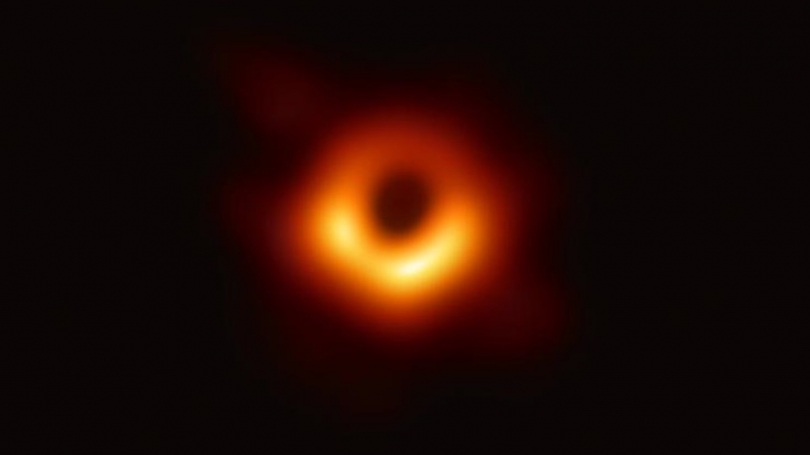
- Undergraduate
- Graduate
- Foreign Study
- Research
- Inclusivity
- News & Events
- People
Back to Top Nav
Back to Top Nav
Back to Top Nav
Back to Top Nav
Back to Top Nav
Pictured above is the first ever direct image of a black hole. The subject of the photograph is a supermassive black hole residing in the center of the M87 galaxy in the Virgo constellation, and it took a team of scientists over a decade to visually capture. This team used the technique of Very-Long-Baseline-Interferometry and powerful atomic clocks to virtually "link" eight large radio telescopes from around the world into one effective dish that was able to precisely gather the relevant data across millions of lightyears of empty space, aptly dubbed "the Event Horizon Telescope Collaboration", or EHC.
The bright orange disk that dominates the photo is the black hole's accretion disk -- a plane of inward-spiraling gas and plasma made hot by immense gravitational and frictional forces. The black circle at the center of the disk is the shadow of the hole itself, and marks the edge of the event horizon, beyond which not even light can return. The data gathered in 2017 was recently published in six separate papers in The Astrophysical Journal Letters, available here for free.
This represents an unprecedented stride forward for all astrophysical fields, ranging from astronomy to cosmology. For more information, read the original papers, linked above, or take a look at the more manageable CNN article here.